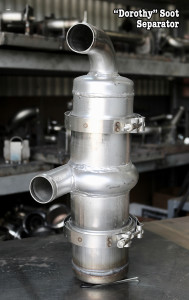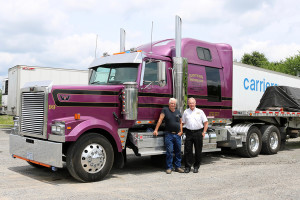A piece of history left me today – something I have owned and cherished for 47 years – a silver 1966 Corvette Coupe that had 19,000 miles on the odometer when I bought it in 1971 at just 22 years old. The mechanical knowledge I gained from building this car made me a champion at Autocross and SCCA Solo 1 road racing. Nelson Ledges Road Course, a 2.3-mile circuit, was my home track, and in 1973 I set the track record there, which held until 1979.
I was told NOT to build this Corvette for the Race Prepared class. They said I was too young, too poor, and certainly did not have the driving experience. I will admit that I was young and didn’t have much money, but, I was working a day job in Traffic and Transportation, and in the evenings, I was rebuilding wrecked Corvettes. As for driving, what my critics didn’t know was that I loved speed – the faster I could get a Corvette to go, the happier I was.
Those of you who know the terrain in Western Pennsylvania realize that most of our roads are hilly two-lane country roads with plenty of curves. Back then, I was mastering the art of 4-wheel drifting. My first time racing the ‘66 Corvette at Nelson Ledges I finished 2nd out of 144 Corvettes. I only had one person to beat, and that happened in 1973, when I set the track record. It was bitter-sweet to see the old Vette go, but she went to a good home!
Life is amazing. Many of us go through life being told what we can’t do. I was always told, “You can’t build high-performance diesel engines for truckers,” and, “You can’t take a Big Cam 400 Cummins and produce 800 horsepower and expect it to live.” The most recent one I’ve heard was, “You can’t pilot a boat to the Bahamas – you have never been out of sight of land on a boat and you have never had a class on reading a chart or navigating… and it’s only you and Debbie. You can’t do that.” Well, Debbie and I did it last summer. Maybe someday people will quit telling me I can’t do things. In the meantime, I’ll continue to do what others say can’t be done.
Back in June, a new Western Star pulled into our shop and I had to go and see this beautiful purple truck. A 78-year-old owner operator climbed out of the cab and his name was Charles Cowdrey. What I thought was a brand-new truck turned out to be a 1999 that he only paid $13,000 for. Let me explain. Charles had another ‘99 Western Star, which was powered with a 60-Series Detroit using the Pittsburgh Power exhaust manifold, 15% larger turbocharger, torsional damper and mercury-filled engine balancer, along with the Pittsburgh Power computer. This 12.7-liter engine produced 763 horsepower on Level 2 of the power box so, needless to say, power was not an issue.
Not long ago, Charles’ grandson was driving the Western Star on I-85 in Durham, N.C. when a two-foot diameter tree fell on the truck while he was driving – at 70 mph! I’ll bet he never saw that coming. The tree hit the hood and then the side of the cab, demolishing the truck. Branches of the tree ripped the oil drain plug out of the oil pan, but the grandson was smart enough to shut off the engine as soon as he got to the side of the road, so no damage occurred to the Detroit.
Having only been driving a truck for 60 years, Charles decided that he was not finished yet (his first truck was a 1958 Ford F1000 with a 534 cubic-inch gas engine). The insurance company gave Charles $26,000 for his demolished Western Star, which he then bought back from them for $6,000. His search for another Western Star took him to the state of Indiana, where he purchased the purple 1999 Western Star for $13,000. He sold the seats, engine, transmission, differentials, tires and wheels for $10,000. Then, he took the parts from his wrecked Star and installed them on the new rig, and then off it went to the paint shop. As you can see, the result is phenomenal! He fooled me – I thought it was a brand new Western Star. The next part of this article was written by one of my new technicians, Andrew Wilson.

As you know, 14 years ago truck makers had to meet stricter emissions requirements and the common solution was an Exhaust Gas Recirculation (EGR) system. Shortly after, the Diesel Particulate Filter (DPF) and Diesel Exhaust Fluid (DEF) were added. These systems need to be maintained or they will cause significant problems, but many shops do not understand them or know how to keep them operating properly. Disassembling and cleaning these parts is time-consuming and expensive, therefore, we’ve come up with two solutions.
The first solution to keeping your emission system clean is our “Dorothy” soot separator, which removes the heavy soot particles from the EGR flow and prevents soot buildup in your engine. It also will give your DPF and DEF a longer life. We recently collected 1.3 pounds of soot from a Dorothy collection pot – a new record. Think of that much soot building up in your engine and getting stuck on the valves!
The second solution is rather new, but we’ve had great success with it. Using compressed air to force a foam cleaning solvent through the engine, this system can break down dense carbon buildup. With a computer controlling the engine RPM, the solvent cycles through the air passages, cleaning everything from the intake to the exhaust, including the DPF. Afterwards, a parked regen burns off the existing solvent and then the oil is changed. The result is a restored emissions system – and a truck that runs good as new.
Doing what people say can’t be done is exhilarating, and I highly recommend it. If you have any comments or questions, Andrew or I can be reached at Pittsburgh Power in Saxonburg, PA by calling (724) 360-4080. To see all our available products and service, visit us online at www.pittsburghpower.com today.



